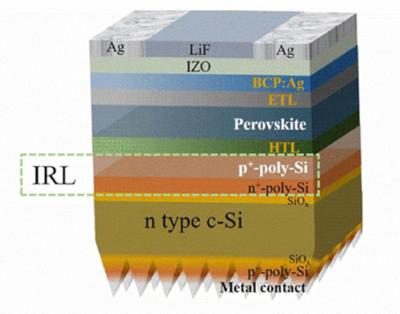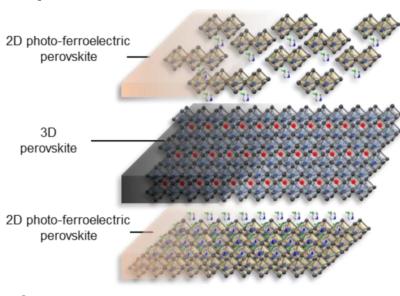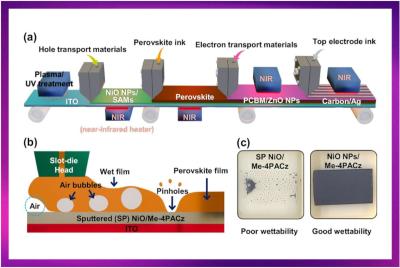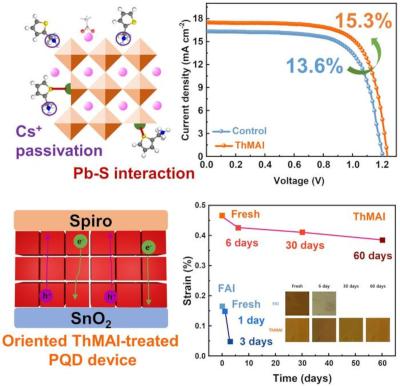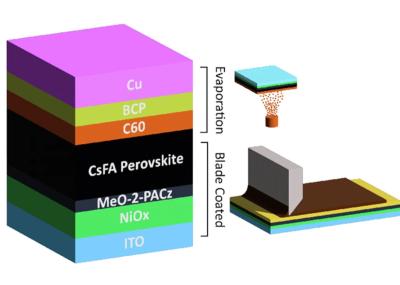Researchers report blade-coated perovskite/silicon tandem solar cell with 31.2% efficiency
Researchers from King Abdullah University of Science and Technology (KAUST) and Helmholtz-Zentrum Berlin (HZB) have developed a perovskite-silicon tandem solar cell that achieves efficient charge extraction and interface passivation. The team improved the performance of blade-coated tandems by introducing 2D perovskite layers at the bottom interface.
Image credit: Joule
These modifications enhanced the blade-coated tandem performance to a certified PCE of 31.2%, owing to efficient charge extraction and interface passivation. This work demonstrates the efficiency potential for scalable ink-based fabrication, emphasizing stability and manufacturability, which are crucial for the widespread adoption and commercial success of this promising photovoltaic (PV) technology.


